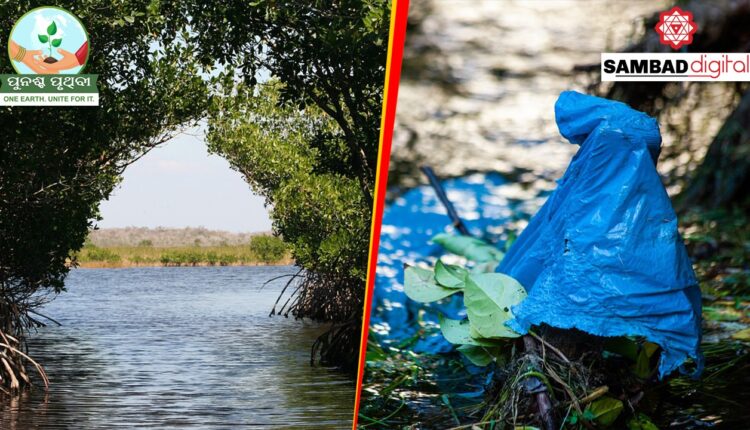Bhubaneswar: When someone talks of a forest, chances are that the person pictures trees rising high above, leaves crunching underfoot. However, the same does not hold true always as there are other types of forest – in and under the water – that are equally beautiful and precious.
Experts states that these underwater forest are called blue forest and are essential to life on this planet.
“They protect our coastlines from flooding and erosion. They shelter wildlife and provide sustainable livelihoods for communities. And we’re just beginning to understand how important blue forests are in keeping our planet’s climate stable,” said Leticia Carvalho, United Nations Environment Programme (UNEP) Head of Marine and Freshwater Ecosystems. “But they are also highly vulnerable. We need to cherish and protect these vital resources.”
Here’s a look at some of the most important blue forests:
Mangroves: Mangroves are salt-tolerant trees and shrubs which grow along coasts. They support a rich biodiversity and provide a nursery for fish and crustaceans. Mangroves also act as a form of natural coastal defence against storm surges, tsunamis, rising sea levels and erosion.
Research shows that mangrove ecosystems help local economies by supporting fisheries, providing other food sources and protecting coastlines. They also absorb up to five times more carbon from the atmosphere than forests on land, a study conducted by the United National Environment Programme (UNEP).
Still mangroves are disappearing three to five times faster than overall global forest losses. In past 40 years, mangrove coverage has been halved.
Salt marshes: Salt marshes are found in bays and estuaries along tidal coastlines in parts of the world where there is low-lying land and a temperate climate. They are important nesting and feeding grounds for birds, and their shallow, brackish waters provide shelter for fish, molluscs and crustaceans.
Research shows that salt marshes, along with mangroves, peatlands and seagrass beds, store more carbon than the world’s on-land forests combined.
Seagrass meadows: Seagrasses are marine flowering plants found in shallow waters from the tropics to the Arctic Circle. Seagrass meadows protect coasts from erosion, store carbon and contribute to food security by helping produce healthy fish stocks. Apart from absorbing oceanic carbons, seagrass meadows filter microplastics, helping keep waters free from harmful pollution.
Rockweed: Rockweed comprises several species of macroalgae, recognizable by their air-filled bladders, which allow them to float upright at low tide. In some societies, rockweed is a staple food and is the original source of iodine. Commercial ventures like rockweed farming can create new economic opportunities, particularly for women in rural communities.
(This story is a part of ‘Punascha Pruthibi – One Earth. Unite for It’ awareness campaign by Sambad Digital)


Comments are closed.